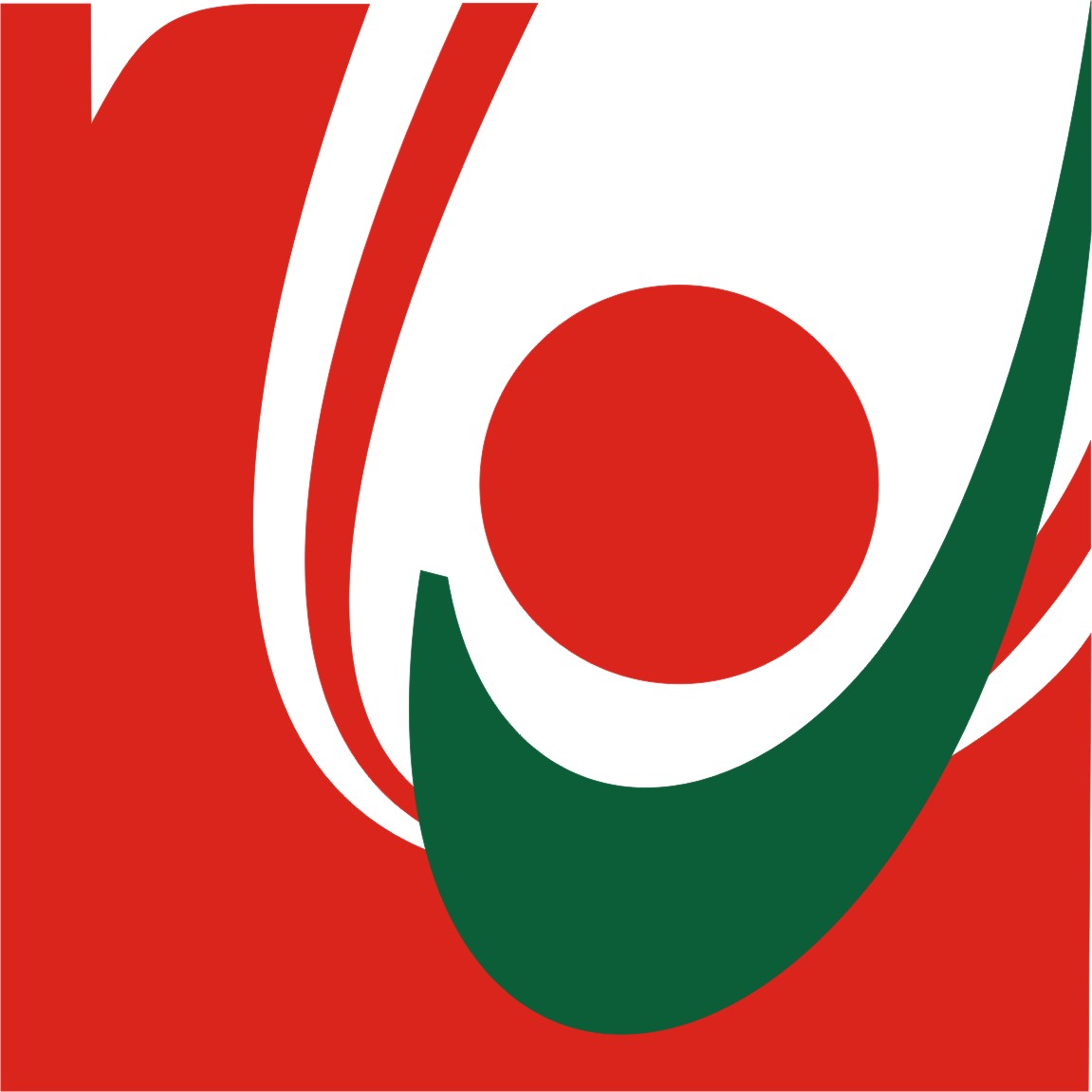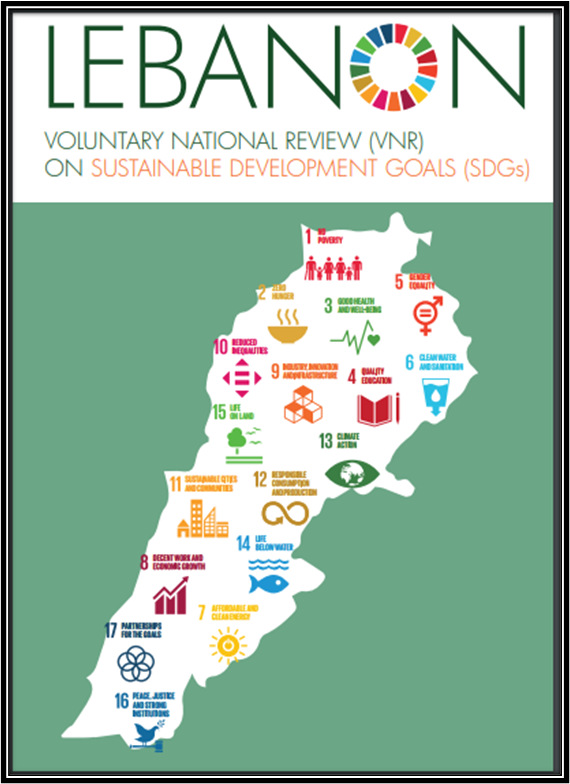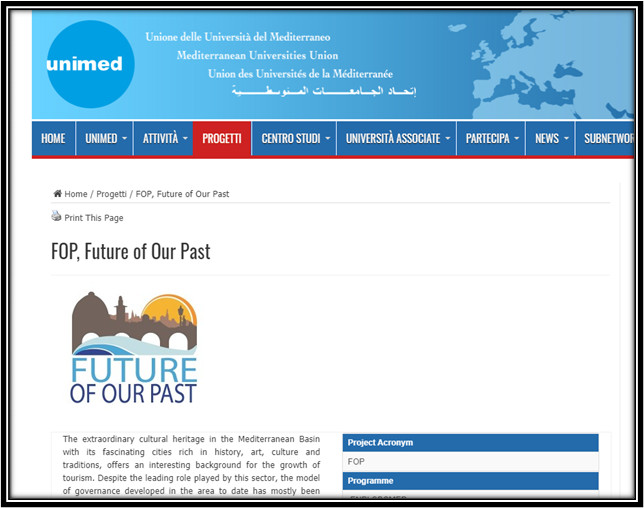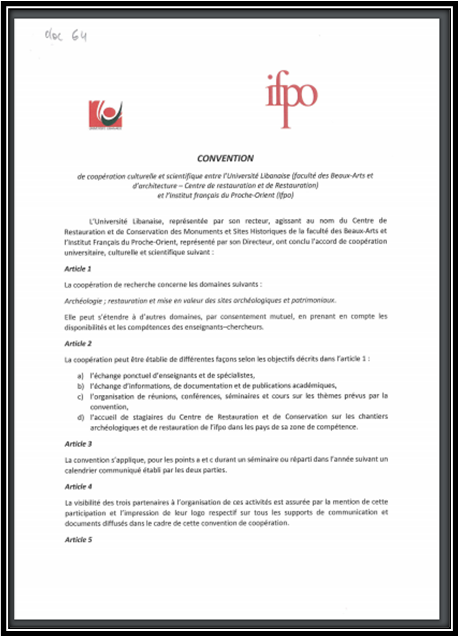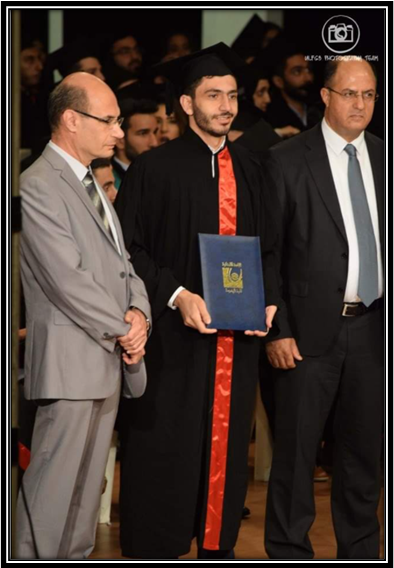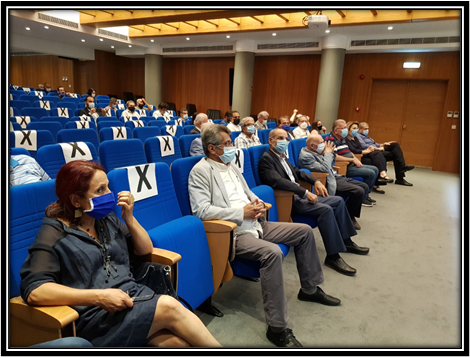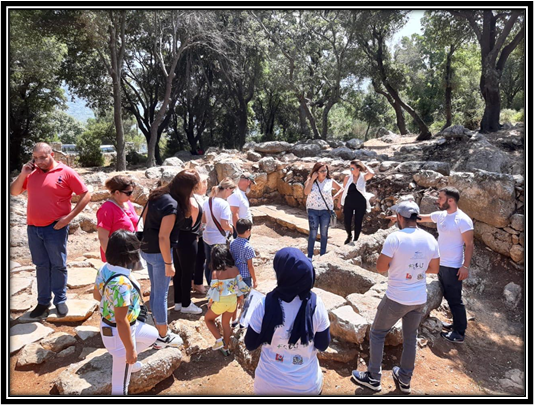SDG11: SUSTAINABLE CITIES AND COMMUNITIES
INTRODUCTION
The Sustainable Development Goals (2015-2030), also known by its acronym SDGs, are an initiative promoted by the United Nations to give continuity to the development agenda after the Millennium Development Goals (MDGs). There are 17 objectives and 169 targets proposed as a continuation of the MDGs, including new areas such as climate change, economic inequality, innovation, sustainable consumption and peace, and justice, among other priorities. After a negotiation process on the SDGs that involved 193 member states of the UN, on September 25, 2015, the 193 world leaders approved at a summit held in New York in a high-level plenary meeting of the General Assembly, an Agenda entitled “Transform our world: the 2030 Agenda for Sustainable Development ", which entered into force on January 1, 2016.
The 11th goal of the sustainable development goals (SDGs) focused on the importance of making cities and human societies inclusive, safe, flexible and sustainable. However, achieving this goal has challenges, especially as individuals and families continue to migrate to cities in pursuit of better livelihoods.
Statistical projections indicate that by 2050, the population of cities will double, specifically in Asia and Africa, where about 70 people out of every 100 people in the world will live in cities. Accordingly, a lot of work is needed in the field of securing a sustainable way of life in major cities to meet people's needs while preserving natural resources for future generations.
Lebanon is not far from this reality, as it is witnessing a rapid urban expansion accompanied by complex problems, including ensuring access for all to services, education, affordable housing, and environment protection.
If we want to summarize the most important reasons for immigration to the city, we see that the lack of development projects and the dwindling of job opportunities in the countryside are the first reason, in addition to the unequal availability of official government departments in the governorates, and reliance on the capital as a main center for factories, higher education institutions, companies and institutions, whether governmental or private.
Years before the United Nations announced the 2030 Agenda goals, the Lebanese University strengthened its presence on Lebanese territories and branched out its faculties in various regions in order to ensure access to education for all and contribute to creating a stable, safe and sustainable environment for students of higher education in the Lebanese governorates.
The Lebanese University constructed the university compounds in Hadath - Beirut and Tripoli based on sustainable development standards, among which green buildings, recycling, solar energy, water consumption, photovoltaic panels, green spaces and others.
GOAL 11: Sustainable Cities and Communities
Lebanon has been experiencing rapid urban expansion. This comes with complex problems including ensuring everyone has access to services and affordable housing and protecting the environment. National and local actors are responding to this problem across relevant sectors.
About one in five displaced Syrians live in urban areas. This has led to increased population density and put more pressure on public services. The CNRS-L is responsible for measuring seismic activities and CBRN emissions through its Geophysical Center and Atomic Energy Commission respectively. The CNRS-L supports the government to implement the Sendai framework, particularly its priorities on understanding disaster risk and strengthening disaster risk governance to manage disaster risk. The CNRS-L is responsible for releasing all hazard and risk maps (earthquake, flood, landslides, forest Fires and droughts), and has released several hazard and risk assessment reports for each of the governorates’ critical infrastructure, and for the agriculture sector. The CNRS-L contributed to the national disaster management strategy.
Despite these urbanization challenges, Lebanon’s biggest cities have succeeded in preserving their old cities as historical heritage. Lebanon is also endowed with a rich natural heritage including its north to south coastline. A coastline master plan, or land-use strategy, is currently being developed that will ensure the socioeconomic and environmental dimensions of development are balanced and integrated.
The Lebanese University cooperated with CNRS-L in the field of urbanism and architecture where scholarship is provided to students from faculty of fine-arts and architecture in order to improve research in this field and to set analyses for a better urbanism verifying European standards. Also, the Lebanese University cooperates in heritage and patrimonies in collaboration with UNESCO and regional universities and institutions to advance research and preserve heritage in the countries.
Moreover, the Lebanese University participated to European projects such as Future of our past aims to address by means of a model focused on innovative tourism plans for cultural and environmental heritage.
Future of our past
The Lebanese University has signed an agreement with Institut Francais du Proche-Orient on September 2018 (doc 64) aiming to exchange experts and documentation with the Center of building restoration of the Fine-Arts faculty concerning the conservation of monuments and historic sites.
The Lebanese University established on 11 February 2016 (doc 65) an agreement with the Dunyeh municipality aiming to develop training and expertise in engineering and architecture and urbanism fields
Students of the Department of Fine Arts at the Faculty of Fine Arts and Architecture / Lebanese University visited the Asaad Rino Museum in Deir el Qamar, at the invitation of the sons of the great artist Renno and in coordination between the Dean of the Faculty, Dr. Hisham Zein El-Din, and the journalist Laila Al-Dahouk.
The trip began with a visit by the students of the Department of Fine Arts from the branches of Al-Hadath, Furn Al-Chebbak and Tripoli to their colleagues in the fourth branch - Deir Al-Qamar in the presence of the branch manager, Dr. Kamal Abu Hamdan and a number of professors and employees, where everyone toured the Department of Fine Arts and the branch's studio.
From the fourth branch of the Faculty of Fine Arts and Architecture, the students moved to the Asaad Reno Museum accompanied by the trip coordinator Dr. Youssef Skeki and Drs. Iman Al-Mokadam, Suzanne Shukroun, Antoine Yazbek, Rola Shams El-Din and Muhammad Hussein.
The delegation of the Lebanese University was received by the sons of the artist Asaad Reno, the consul Eng. Girard, Engineer Edgar and the plastic artist Bernard.
Eng. Edgar Reno gave a welcoming speech to the students and introduced them to Asaad Rennaud Sr. and artist, then Dr. Hisham Zeineddin spoke about the importance of this cultural meeting and its role in the process of acquaintance and the openness of students to each other and to artistic and cultural institutions and centers in Lebanon.
After that, the students toured the museum's sections accompanied by the artist's sons and their professors, who gave them the necessary explanations about the museum, to conclude the activity with a tour of the most prominent historical places of Deir El Qamar.
The sons of the artist Renno also presented certificates of thanks and appreciation in the names of students and professors, along with an overview of the life of the artist Asaad Rano.
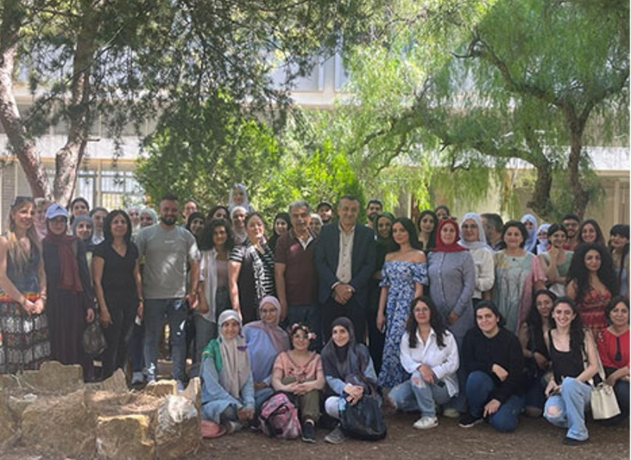
The Department of Arts and Archeology at the Deanship of the Faculty of Arts and Humanities / Lebanese University continues to organize a series of lectures on archeology at the Central Administration Building - Museum, under the supervision of the Dean of the Faculty, Dr. Heba Shendab, and under the coordination of the Master Coordinator, Dr. Nada Elias.
On June 6, 2023, Dr. Józef Beszédes from Pázmány Péter Catholic University gave two lectures on the "Roman Settlement of Pannonia" and the results of the excavation in the settlement of Obuda/Budapest - Hungary, in the presence of a group of students and professors of the department, including Dr. Janine Abdel-Masih and Dr. Hanan Sharaf.
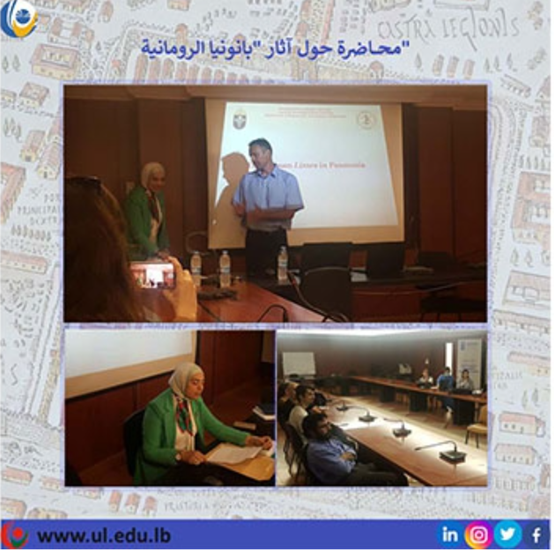
The Department of the Master in Landscape and Landscape Planning at the Faculty of Fine Arts and Architecture / Lebanese University hosted twenty students from the Faculty of Engineering at Ain Shams University / Cairo, from July 23 to 31, 2023 and within the course (APPEL - Atelier Pluridisciplinaire du Paysage à l'Echelle Locale).
The students of the two faculties shared ideas and proposals related to the Branding Saida project, the focus of the cooperation agreement between the Lebanese University and the Municipality of Saida.
The project presents a vision to reconnect the city of Sidon with the sea and provides a practical landscape approach strategy to reposition the city on the tourist map by highlighting its archaeological and environmental landmarks and its ability to attract local and foreign tourism.
On July 27, 2023, students of the two universities gave a visual presentation about the project at the Sidon Municipality Building in the presence of the Dean of the Faculty of Fine Arts and Architecture, Dr. Hisham Zein El-Din, Head of the Specialized Master Department in Landscape Planning and Natural Sites, Dr. Nina Zeidan, Head of the Department of Urban Planning, Dr. Raed Jouni, professors from the department: Dr. Elie Khattar, Dr. Samar Makki Haidar, Dr. Salah El-Din Sadiq, Engineer Wissam Melhem, in addition to members of the Municipality of Sidon (Eng. Mustafa Hegazy, Muhammad Al-Baba and Haifa). Secretary).
The Egyptian student delegation was accompanied by Dr. Marwa Khalifa, Head of the Environmental Architecture and Urbanism Program at the Faculty of Engineering at Ain Shams University, and Dr. Noha Gamal, International Mobility Coordinator at the University's International Cooperation Office.
It is noteworthy that the Egyptian student and administrative delegation toured several Lebanese archaeological and tourist areas, and concluded its visit to Lebanon with a dinner held in his honor at Al-Sayyad Restaurant / Beirut, where certificates of participation were distributed to students and professors by Dr. Zein El-Din and Dr. Zeidan.
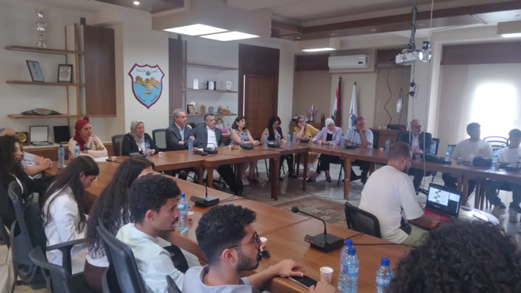
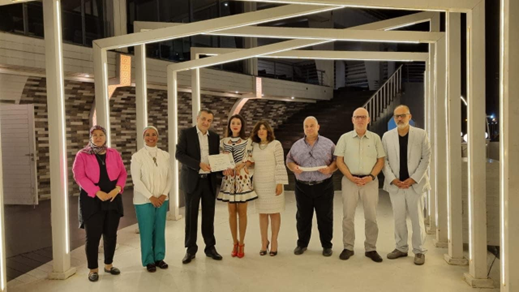
Student Ghada Saad, from the Faculty of Fine Arts and Architecture – First Branch at the Lebanese University, won first place for the best graduation project in architecture within the Chadirji Award for Architecture Students in Lebanon in its twenty-third edition.
During a ceremony hosted by the Order of Engineers and Architects in Beirut, 17 projects participating in the award were presented to architecture students graduating in 2022 from (Faculty of Fine Arts and Architecture / Lebanese University, Lebanese Academy of Fine Arts/University of Balamand, Lebanese American University, American University of Beirut, Beirut Arab University, Holy Spirit University - Kaslik, Notre Dame University, Medina University and University of Venice), where the students presented their projects in front of a specialized jury and in the presence of a group of deans of faculties of architecture and university professors. and engineers and students.
According to the results of the judging, student Ghada Saad won the first prize for her project related to "Reformulating the Concept of Social Housing in Palestinian Communities / Residential Complex in Al-Sikka neighborhood in Sidon.
Student Jason Elie Qurban (Faculty of Arts – Second Branch) and Marianne Claude Habib (Faculty of Arts – Fourth Branch) received a special praise and mention from the jury for their projects:
Gissin Project: "Reviving Life on the Lebanese Coast – Beyond Just a Real Estate Location"
Marianne Project: "A special monument to the martyrs of the August 4 explosion"
It is noteworthy that the Chadirji Award (established in 2000) aims to stimulate dialogue and discussion about architecture and reward a graduate with a clear and critical architectural vision, provided that his project is innovative and notes the specificity of the place and the importance of architecture as a means to develop society and establish its values and moral foundations.
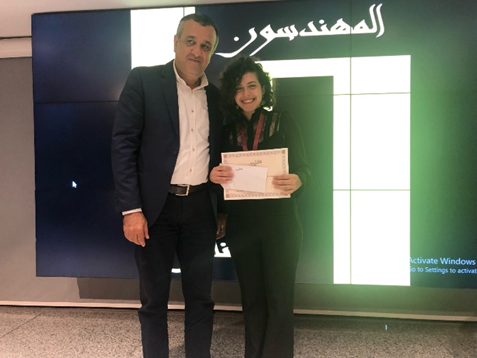
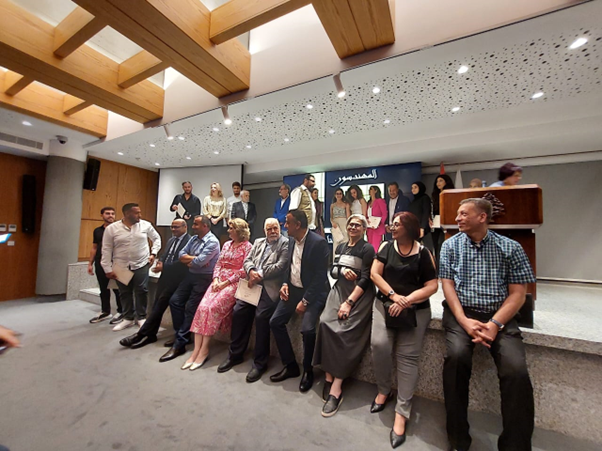


The new Indonesian Cultural Attaché visits the Deanship of the Faculty of Fine Arts and Architecture
The Dean of the Faculty of Fine Arts and Architecture at the Lebanese University, Dr. Hisham Zeineddine, received the new Cultural Attaché at the Indonesian Embassy in Beirut, Mr. Asrar Eddin Salam, in the presence of the former Dean of the Faculty, Dr. Muhammad Al-Hajj.
The two sides discussed ways to enhance the existing cooperation between the Faculty of Fine Arts and Architecture and the Cultural Attaché at the Indonesian Embassy and exchange experiences with Indonesian universities specialized in the field of arts, in addition to the importance of continuing to organize joint artistic and cultural events, the latest of which was the Indonesian artistic celebration last March with the participation of the Indonesian peacekeeping force working within UNIFIL and the Indonesian community in Lebanon.
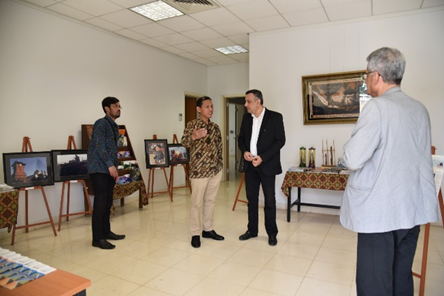

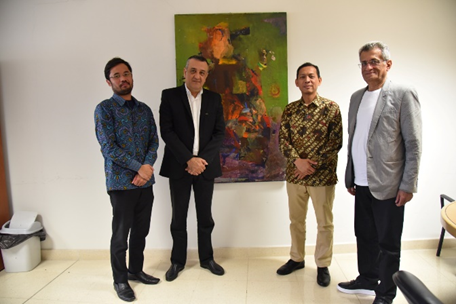
The Department of Arts and Archeology at the Deanship of the Faculty of Arts and Humanities / Lebanese University continues to organize lectures on archeology in the Central Administration Building - Museum, under the supervision of the Dean of the Faculty, Dr. Heba Shendeb, and under the coordination of the Master Coordinator, Dr. Nada Elias.
On June 5, 2023, Dr. Laurent Vas from Pázmány Péter Catholic University gave a lecture on "Religions and Architecture in the Roman Empire" and "Roman Material Culture", in the presence of a group of students and professors of the Department of Arts and Archeology, including Dr.
Janine Abdel-Masih and Dr. Zainal Fani.
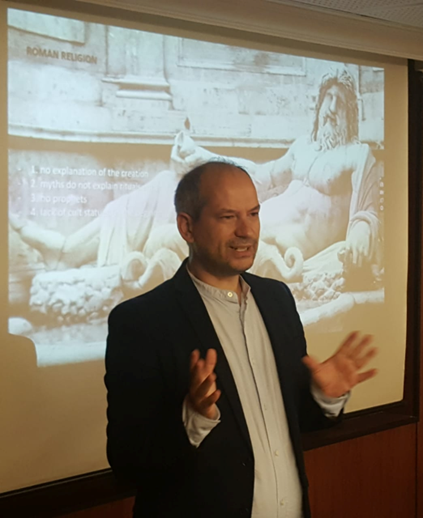

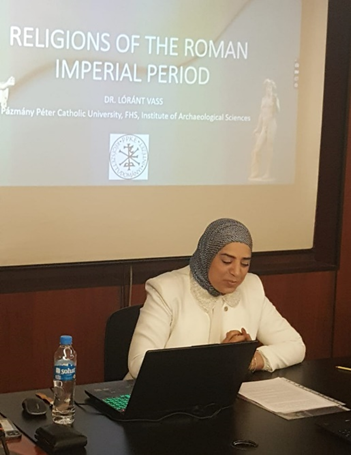
The Department of Arts and Archeology at the Deanship of the Faculty of Arts and Humanities / Lebanese University continues to organize lectures on archeology in the Central Administration Building - Museum, under the supervision of the Dean of the Faculty, Prof. Heba Shendab.
On May 26, 2023, Dr. Balage Major, Director of the Faculty of Archaeology at Pázmány Péter Catholic University, gave two lectures on the results of archaeological research in the Kurdish fortress and Islamic and Christian military architecture during the twelfth and thirteenth centuries.
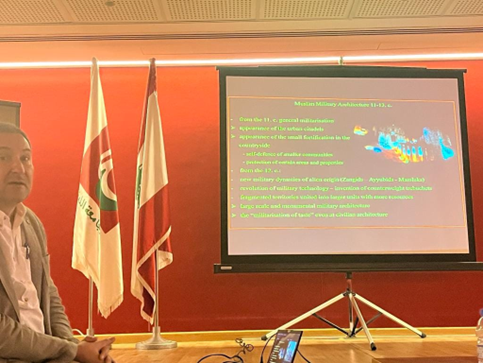
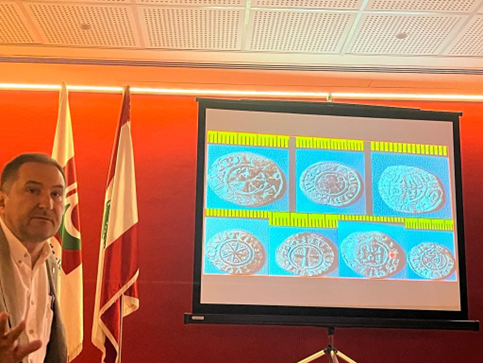
The second-year students / Department of Arts and Archeology at the Faculty of Arts and Humanities - First Branch at the Lebanese University visited the antiquities of the city of Tyre, accompanied by Dr. Thuraya Jabak and Dr. Ali Badawi, responsible for archaeological sites in Tyre - Directorate General of Antiquities.
During their field tour, the students listened to Dr. Jabak and Dr. Badawi explain the archaeological sites of the city in a detailed and accurate manner.
The visit began from the site of Albus, which is considered the largest Roman Nacropol in the world due to the large number of carved noises in it, and then the triumphal arch of Emperor Hadrian, where an educational video was filmed about this landmark.
The tour also included the race field, where the students listened to an explanation about the water barrages in it, then headed from the bus to the city site, specifically to the basilica, the square Roman theater, the ancient water tanks and the Roman bath, to conclude the visit in the ancient Roman shops.
The Dean of the Faculty of Fine Arts and Architecture at the Lebanese University, Dr. Hisham Zeineddine, received an academic delegation from the Berlin University of Technology in the presence of the Director of the Center for the Conservation and Preservation of Monuments and Historical Sites of the Faculty, Dr. Sonia Al-Quran and Dr. Yasmine Maacaron.
The German delegation, which included 9 professors and 37 doctoral students in the Department of Traditional Techniques at the Berlin University of Technology, made a multi-day tour that included a visit to the Roman temples in Lebanon and the Center for the Restoration and Preservation of Monuments and Historical Sites at the Faculty of Fine Arts and Architecture.
The meeting comes within the strategy of the Faculty of Fine Arts and Architecture aimed at opening up to Arab and Western universities to enhance scientific and research cooperation, exchange experiences between professors and students, and keep pace with global developments in the college's specializations.
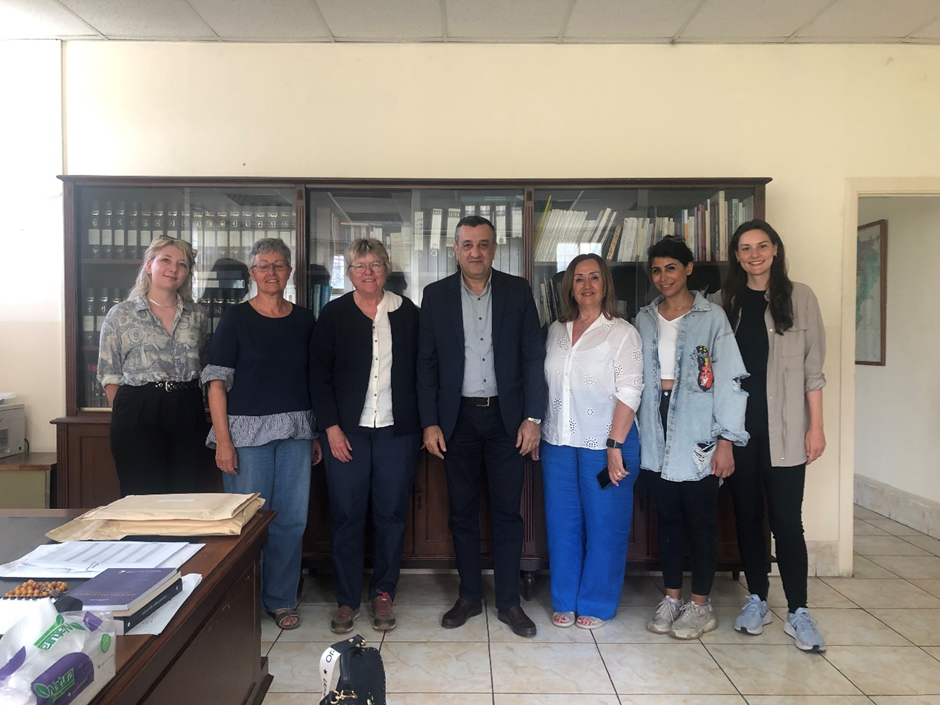
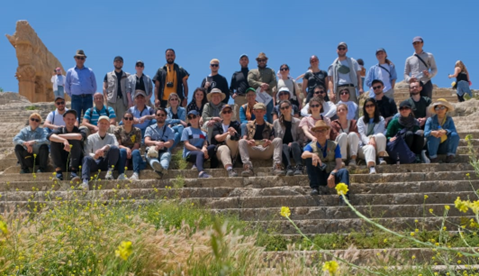
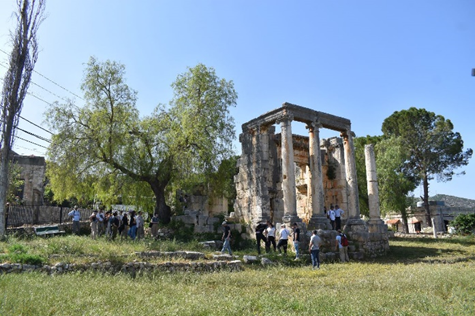
International Award for Students of the Faculty of Fine Arts and Architecture at the Lebanese University for their project to rebuild the Port of Beirut
Students of the Faculty of Fine Arts and Architecture – Second Branch at the Lebanese University won the first place globally in the international competition (Inspirelli) and won the Jury Prize and the Public Vote Award via (Instagram) for two projects related to the reconstruction of the Port of Beirut, namely:
Beirut Port: An Urban Life Generator
The winning project of the Student Jury Prize (Sergio Zgheib, Peter Aoun, Julian Mikhail, Tia Bishara, Lea Lahoud, Rita Abizaid and Nour Kreidi)
Beirut- A Multi layered Port City
The winning project was voted by the public on Instagram for students (Myriam Abi Khalil, Clara Fahad, Ghinwa Mansour, Ghinwa Bou Fadel, Sarah Atwi and Melissa Seikaly)
The fourth-year architecture students received the award during a ceremony organized on September 8, 2022 at the Sursock Museum in the presence of the Governor of Beirut, Judge Marwan Abboud, the Mayor of Beirut, Jamal Itani, the officials of the (Inspirelli) competition, the Director of the Faculty of Fine Arts and Architecture (2), Dr. Christian Sfeir, the Head of the Architecture Department at the Faculty, Dr. Reem Zgheib, and a number of professors from the faculties of Lebanese and foreign universities.
The Czech organization Inspirelli, which has been organizing this competition for years, decided that this year's prize will be for projects concerned with the reconstruction of the port of Beirut, so the students of the Lebanese University shared the first prize globally with an engineering project submitted from Malaysia.
The competition jury pointed out that the design criteria in the project of the students of the Faculty of Fine Arts and Architecture are considered the most appropriate in terms of geographical location, cost and shape, while the Mayor of Beirut, Jamal Itani, considered that the Lebanese University presented a distinctive design that will be transferred through the Municipality of Beirut to the Ministry of Public Works and Transport concerned with the reconstruction of the port of Beirut.
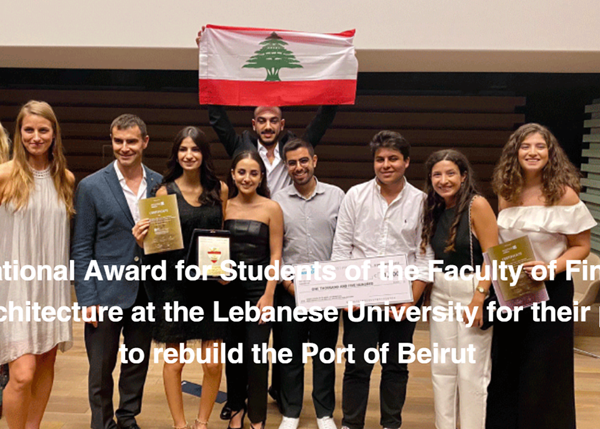
The Office of University City Affairs announces the start of receiving applications for accommodation in student housing units in President Rafic Hariri University City in Hadath for the academic year 2022-2023, starting from Tuesday 29/11/2022 until Monday 19/12/2022 inclusive.
1- Old students enrolled at the Lebanese University and non-residents of student housing units:
- A statement or a copy of the registration card or receipt for payment of registration fees in one of the units of the Lebanese University.
- A statement of success from the college to which the student is affiliated and the average / 20 (or a statement of nomination for the exams of the second session in the college)
- Issuing an individual record or a certified copy of the mukhtar (not exceeding one year's date).
- A recent photograph measuring 3.5 * 4 certified by the mukhtar.
- A statement of the main place of residence from the chosen one for the current academic year.
- A health certificate from a doctor stating and proving that the student is free from communicable and infectious diseases.
- A document showing the blood type.
- A statement proving that the applicant is the son of an employee if one of the parents is a professor or employee at the Lebanese University, provided that the housing distance is not less than 30 km and the general average is not less than 12/20.
- The student must keep the review voucher delivered to him from the City Affairs Office Department via e-mail in order to preserve his right.
- A statement from the school from which he finished his secondary education.
Any student can apply for residence in student housing units on the basis of a candidate to belong to any of the faculties of the Lebanese University that accredits the entrance competition to join it (e.g. medical sciences candidate, dentistry candidate... etc.)
The specialization mark is canceled and reduced to 250 marks in the event of failure to succeed in the entry match on the basis of which the application is submitted.
2- For old students residing in student housing units:
- A housing renewal application for the academic year 2022-2023 submitted exclusively at the University City Affairs Office
- A statement or a copy of the registration card or receipt for payment of registration fees in one of the units of the Lebanese University
- A statement of success from the college to which the student is affiliated and the average / 20 (or a statement of nomination for the exams of the second session in the college)
The student is not considered old unless he resides in the housing units (4) continuous months, and every student currently residing is temporarily accepted by virtue of the new student.
- The student must keep the review voucher delivered to him by the administration of the University City Affairs Office in order to preserve his right.
- The resident student is not considered old if he is accepted to stay in the student housing units.
3 – New Students:
Applications should be submitted in Arabic (online) through the website (luc.ul.edu.lb)
The conditions and documents required to submit the application are specified as follows:
First: The application shall be printed and the following documents shall be attached with a photocopy of each document measuring (A4)
- A statement or a copy of a registration card or receipt stating that the registration fees have been paid in one of the faculties of the Lebanese University. (Or a copy of the nomination document for the entrance competition in one of the faculties of the Lebanese University)
- An original school statement stating the name of the school in which the student obtained his secondary school diploma.
- Issuing an individual record or a certified copy of the mukhtar (not exceeding one year's date).
- A recent photograph measuring 3.5 * 4 certified by the mukhtar.
- A statement of the main place of residence from the chosen one for the current academic year.
- A health certificate from a doctor stating and proving that the student is free from communicable and infectious diseases.
- A document showing the blood type.
- A statement proving that the applicant is the son of an employee if one of the parents is a professor or employee at the Lebanese University, provided that the housing distance is not less than 30 km and the general average is not less than 12/20.
- Baccalaureate certificate, second section, with marks for first-year students, provided that the general average is not less than 15/20 for those who are not subject to an entrance match to the Lebanese University or a certificate of success from the college to which the student is affiliated with the average of / 20 for students enrolled in the Lebanese University.
The application shall be submitted in print and attached with the required documents and submitted either by hand to the Office of Prime Rafik Hariri University City Affairs - Hadath, or by LibanPost at the following address: Lebanese University - Rafik Hariri City University - Hadath, University City Affairs Office - Hadath, Tel: 05-463279 within a maximum of 7 days from the date of submission.
Second: Rejects:
- Any application that does not meet the above conditions or deadlines or an application that contains incorrect information.
- Each application for a student who has completed his specialization and the years of specialization are determined as follows: three years for all specializations, except for the specialization of the faculties of medical sciences, dentistry, pharmacy, engineering and architecture, whose duration of stay is four years.
- Students who have completed their specialization or registered in a second major have resided for three years in student housing units, except for the specialization of the faculties of medical sciences, dentistry, pharmacy, engineering and architecture, whose duration of stay is limited to four years.
- Students over the age of twenty-four years, with the exception of students residing under cultural exchange with their towns, subject to obtaining the approval of the university presidency.
- Students who failed twice during the period of completion of their specialization
- Master's 1 students (as of the academic year 2022-2023) or Master 2 in all disciplines and five-year students in the specialties of (general medicine - dentistry - pharmacy - engineering and the rest of the specialties that require completion of five years).
Third: The acceptance of students to reside in housing units is subject to a list of priorities and criteria specified in its internal system, the most important of which are:
- The nature of the study in the college or the specialization in which the student is registered and the attendance system
- The geographical distance of the student's main residence from the university city center.
- The student's marks in the baccalaureate certificate, the second section for first-year students, or his marks in the entrance match or in the college to which he is attributed
- The year in which the student is registered in one of the faculties of the Lebanese University
Fourth: The names of students accepted to reside in student housing units shall be announced at a date to be determined at the time on the bulletin boards at the University City Affairs Office in Hadath and on the Lebanese University website (www.ul.edu.lb)
To find out how to submit the application, you can follow the instructions written within it on the same website belonging to the Office of University City Affairs (luc.ul.edu.lb).
The applicant will be emailed regarding any lack of information or documents and will file a card for review.
Event on 28/11/2022
Administration of the Office of President Rafik Hariri University City Affairs
The Minister of Education and Higher Education, Dr. Tarek Majzoub, the President of the Lebanese University, Professor Fouad Ayoub, and the Assistant Director-General for Education at UNESCO, Ms. Stefania Giannini, inaugurated the building of the Faculty of Education - the first branch in the UNESCO region after its restoration due to the damage caused to it after the Beirut port explosion, in the presence of the Director General of the Ministry of Education and Higher Education, Mr. Fadi Yarak, the representative of the Education Above All Foundation, Mr. Talal Al-Hathal, a member of the Embassy of Qatar in Lebanon, Mr. Nasser Al-Qahtani, and the Director of the UNESCO Office. In Beirut, Mrs. Costanza Farina and the Dean of the Faculty of Education at the Lebanese University, Professor Khalil El-Gammal, in addition to a number of professors and administrators.
After touring the building to see the restoration process, attendees moved to the meeting room where the celebration began with the national anthem, the university anthem and the welcome speech of the journalist Milad Hadchiti.
The President of the Lebanese University, Prof. Fouad Ayoub, pointed out that the meeting of the third of August 2021 is divided into two parts: the first is the completion of reconstruction and rehabilitation work for what was destroyed by the Beirut port explosion in a number of faculties, institutes and central administration building, and the second is the discussion table on the challenges of higher education in light of the successive health and economic crises and the role of UNESCO in facing these challenges.
"On the first occasion, it would not be an exaggeration to say that the reconstruction and rehabilitation of damaged buildings represents for our students, professors and administrative staff the hope we need in this country, based on the principle that resilience and continuity are possible after all," he said.
He added: "Yes, the lives lost as a result of the explosion are a great and irreparable loss, but the destruction of educational institutions also has painful morally, economically and developmentally consequences in addition to the disaster that befell the Lebanese as a result of the disaster of August 4, 2020."
Prof. Ayoub pointed out that from this importance, reconstruction and restoration initiatives were launched, and UNESCO launched a partnership with the Lebanese University, the American University and Saint Joseph University to rehabilitate damaged university buildings under the auspices of the Ministry of Education and Higher Education through a project funded by the Qatar Education Above All Foundation and supported by the Qatar Fund for Development.
He pointed out that the Lebanese University, which received the largest share of the volume of material damage caused by the explosion, announces today that the restoration work is nearing completion pending the completion of the arrival of some equipment and equipment to provide a safe and accessible learning environment for students in various disciplines.
Prof. Ayoub stressed that the presentations and efforts made by UNESCO and the Qatari side confirm that these two parties believe in the importance of sustainable education in Lebanon and that education is a basis for the advancement of peoples.
Regarding the roundtable discussion on the challenges facing higher education in light of the successive crises, Professor Ayoub said: "UNESCO, as a permanent friend of the Lebanese University, will spare no effort to play its role in this field in light of the developments imposed by the Corona pandemic and the transformation of the educational process remotely."
He also stressed that the Lebanese University will continue its cooperation with UNESCO in training programs for professors, accompanying students, addressing their concerns and problems, and ensuring that they obtain good results at the end of the academic year.
Professor Ayoub praised the role of UNESCO and the Qatari side in supporting the rehabilitation of what was destroyed by the explosion, considering that educational institutions must remain strong, stable and pioneering in performing their academic, scientific, developmental and humanitarian role.
For his part, Mr. Talal Al-Hathal thanked the curators for this invitation and expressed his happiness in partnering with UNESCO to support the Lebanese University through the restoration and reconstruction of what was destroyed by the Beirut port explosion.
Mrs. Stefania Giannini expressed her happiness to be at the Faculty of Education - Lebanese University, praising the role of the Faculty in everything that makes higher education brilliant, such as the commitment to quality teaching, learning, research, community service, and the adoption of leadership skills and high competencies.
Ms. Giannini announced the launch of UNESCO's LiBeirut initiative, which aims to place education and culture at the heart of reconstruction efforts and to strengthen local and international partnerships permanently.
"One year after the explosion, Lebanon still faces enormous challenges, especially in the education sector, and we are here to send a message of hope and announce the completion of the rehabilitation work of 16 buildings at the Lebanese University."
Ms. Giannini noted that education is a right for all and must be transformed to become more flexible, appropriate and inclusive to empower learners with the knowledge, skills and values they need to become agents of positive change for their communities and countries.
After that, Minister Majzoub spoke about UNESCO's role in coordinating aid and supporting educational institutions after the explosion, including the Lebanese University, with the generous support of the State of Qatar through the Education Above All Foundation and the Qatar Fund for Development.
The Minister of Education stressed that the Lebanese University faces great challenges, as it is the only national university that embraces most of the sons and daughters of the country, in addition to many sons and daughters of neighboring countries near and far, and despite the scarcity of its resources, it is still striving and striving.
He added: "Today we launch a cry to preserve the university with its professors, students and buildings, the Lebanese University has played a distinguished and distinct role during the crisis of the spread of the Corona virus and put its medical, laboratory and nursing human staff at the forefront and conducted PCR tests and is still conducting these tests for arrivals through the airport, so we hope that everyone will embrace this university by approving draft laws and proposals that facilitate the process of its development, and we seek in the resigned government to sustain the role of the National University."
Minister Majzoub pointed out that the Faculty of Education with its professors, administrators and technicians is for the Ministry of Education the factory that prepares professors, teachers and managers to assume the tasks of education and education, because education is above everything and above all considerations, education is above all and university education, general education and vocational education are also continuing.
In conclusion, Professor Fouad Ayoub received from UNESCO and Education Above All the keys to the sixteen buildings of the Lebanese University after the completion of the restoration process.
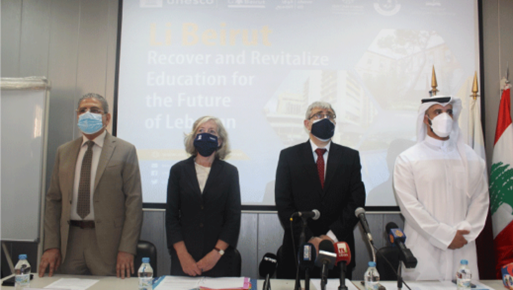
05 August 2021
Beirut Urban Declaration Conference
Order of Engineers in Beirut
10-11 April 2021
Beirut Urban Manifesto
The explosion of the port of Beirut on the fourth of August 2020 constituted a pivotal event in the history of Lebanon and its capital, Beirut. The Beirut Urban Declaration initiative was launched on August 10, 2020 with the participation of the Order of Engineers, Faculties of Architecture in Lebanon, the Chadirji Foundation for Architecture and Society, the Association of Architects and the Association of Urban Planning, and after eight months and the participation of 60 academic and professional practicing professors, during which the Beirut Urban Declaration was produced in October and a workshop was held on the themes of the Declaration in December, and a seminar with the participation of international institutions concerned with reconstruction and the relevant Lebanese local administrations (Directorate of Antiquities and Ministry of Housing).
This document presents a set of ideas that would constitute a starting point for working on an integrated formula for the reconstruction of the areas affected by the port explosion. This is done by proposing a national vision on reconstruction, heritage rehabilitation, protection of the social fabric and the specific identity of the specificity of construction in the area affected by the explosion of the fourth of August, and reformulating the relationship between the port and its urban surroundings.
The document is the conclusion of an intellectual and cultural effort that contributes to the formulation of a comprehensive vision, and it serves as perceptions and suggestions for the general idea of reshaping and weaving the components of the city, to become a set of documented issues, and provide feasible ideas and suggestions, and visionary and operational orientations, for the Lebanese society and its administrations in the relevant official institutions. The scale of destruction is based on the adoption of a comprehensive view of its social, economic and urban aspects, dealing with the site as an integrated urban fabric, and reconsidering the components of the city in general and the afflicted region in particular, within the "statement" of reviewing the historical stages of the city, which form its cultural networks, which are based on its social, economic and architectural fabric, in order to develop a contemporary plan, including perceptions and proposals for the general idea of reweaving and shaping the city.
This statement, based on the components of the urban and architectural community of the city, was based on a review of the history of the formation of contemporary services in Beirut in order to activate the local economic movement of the city.
From these introductions, discussions and research started from the "Beirut Urban Declaration - October 2020", which consists of five main axes:
Historical dimension.
Economic and social dimension.
The overall view of the rehabilitation of the destroyed area.
Challenges of protecting and rehabilitating the urban heritage fabric.
Management and organization of planning and reconstruction. (Establishment of the Observatory of Urban Issues)
The historical dimension is the basic components of reformulating the historical data of the city, in the context of a dynamic contemporary methodology and not a "sequence" one, and this we believe helps to weave urban communicative through its history and link it to its social and urban times, so that the outcome of historical developments becomes the basis for the current use in the development and communication of the city.
The economic and social path, the pillar of the urban transformations of the city, which is based mainly on the movement of society, to form and build the service data of the local community, in order to form a clear methodology for developing the structure of social need.
The comprehensive plan for the rehabilitation of the destroyed area constitutes an integrated view of the fabric of neighborhoods and areas, to reconnect the components of the city with each other, with the aim of completing the existing functions and presenting them within the context of the culture of urban architecture to serve the development and activation of public spaces, and weave the connectivity of Beirut's waterfront.
The challenges of protecting and rehabilitating the urban heritage fabric raise the issue of activating heritage in order to become part of our daily and future lives, within a comprehensive vision plan, starting from a radical solution by establishing an independent management of living urban heritage, where historical and heritage areas are subject to the system of special areas, through which the management, organization and investment of these areas are included, and all ancient and modern heritage buildings are included. This preserves the network of different cultures and builds data on it to understand the components of the city and how to deal with them with the methodology of modern cultural investment in the service of society and its economy.
The management and organization of planning and reconstruction, focuses on how groups work and seeks to establish a data bank, documentation, monitoring and follow-up on the ground and documenting it, in addition to emphasizing the importance of university participation in their research, and innovating mechanisms for involving the local community in the discussion and report of reconstruction paths. Establishing the Urban Issues Observatory for documentation, research, rationalization and production of indicators of deterioration and development.
Recommendations according to their axes.
The historical dimension: The discussions focused on the history of the city of Beirut and the impact of the port's commercial movement and its increase in urban, socio-economic, and legal terms, and its consequences on the expansion of the city and the formation of new neighborhoods within it.
The history of the city was approached through a new perspective, by studying the economic and social role of the port, its prosperity, its repercussions on the conditions of the population, and its competitive position with other ports on the eastern coast of the Mediterranean. Urban expansion of the city, shifts in city size, population density and types of spaces. Highlighting how the administration develops real estate transactions and their impact on the urban expansion of the city. Research on building patterns in the twenties of the last century between tradition and modernity, their uses, the materials used in them and their impact on the existing urban fabric. Research on the typology of service and trade buildings in Beirut (1948-1970), where Beirut became an important commercial center in West Asia.
In sum up the historical dimension of the city, emphasize the role of the Port of Beirut in the prosperity and development of the city of Beirut since its establishment. Emphasis on developing and carrying out administrative reforms, developing the land transport network, rehabilitating and investing in the heritage structures of the port area and reconnecting it to the rest of the capital's historic neighborhoods. We recommend the following:
Emphasizing the importance of relying on historical studies of the city as a main input for future development processes by understanding and reading: the historical development of the urban fabric, the development of the social fabric, the development of the cultural dimension of the city, urban expansion, the laws in force and how they develop.
Affirming the values that the city of Beirut has historically acquired, which are based on the sanctification of freedoms, respect for intellectual pluralism and openness to other civilizations.
Emphasizing the importance of dealing with heritage buildings as an urban fabric, reconnecting it with the network of neighborhoods and other heritage neighborhoods, and preserving everything related to the city's history by scientific methods.
Emphasizing the necessity of taking into account the historical layers of the city of Beirut in all planning studies and the resulting development or amendment of laws or the directive plan.
Economic and social track: The discussions focused on the social and economic problems of the neighborhoods of the explosion area, and research on the causes of production paralysis. The regions were dealt with separately and then the general relationship that binds them to each other was studied.
The study began in the Khader / Karantina area, and the potential that this area holds if it is reconnected to the Mar Mikhael area. The region holds industrial potential capable of securing production and jobs. This is in addition to the presence of large green spaces in the Khader/Karantina area and large properties owned by the Municipality of Beirut, capable of being a natural outlet for the crowded area.
The study also included the areas of Ashrafieh, Gemmayzeh and Mar Mikhael. And the need to preserve its distinct and diverse fabric: residential, commercial and economic, in addition to securing affordable housing.
Approaching the concept of heritage as being more than something of history that must be preserved. It is linked to the foundations of social life and its dynamism with the urban growth of the city. The study suggested the establishment of business incubators in the region, which train young people in the required emerging industries.
The theme included a social study that included a number of people (samples) in various sectors in the region, about people's needs, their view of planned or observed projects, their diagnosis of the most pressing issues, and their future concerns, and opinions focused on turning the explosion into an exceptional opportunity to change the mentalities that prevailed and that led to the disaster, and in the end we recommend the following:
Forming local committees, through the creation of mechanisms on the scale of neighborhoods and neighborhoods, as a participatory path in reconstruction, restoration and reformulation of places, responding to their customs and dreams and rebuilding the cohesion between them and their places.
Considering social culture as a priority in any urban study of the city and reinterpreting places according to their social specificities.
Establishing business nurseries to show and build creative youth capabilities in society, and extract them from daily living. These incubators rely on efficient local economies, pushing them to grow and develop.
Giving the area of Al-Khader/Karantina the necessary importance in terms of solving the cuts through the functions of buildings that constitute a living history in the city, and must be preserved and the surrounding local community.
Providing educational and health services and equipment and rehabilitating infrastructure in all affected neighborhoods, and we also recommend linking educational institutes with the economic vision in terms of encouragement and training in the required industries.
Comprehensive view of the rehabilitation of the destroyed area: Discussions and research focused on reconsidering the components of the city in general and the afflicted area in particular, as part of a "statement" to review the historical stages of the city, which is based on its social, economic and architectural fabric, to develop a contemporary plan to reconsider the destroyed area of Beirut.
This comprehensive view is the result of the components of the local community, urban and architectural of the city, and it aims to review this history of contemporary services in order to activate the local economic movement, to reconnect the components of the city with each other and to activate public services and spaces in the city. By posing the following hypotheses:
1- The port area and its relationship with the city
The port's relationship with the city constitutes a starting point for the comprehensive vision of rehabilitating and linking the city's components and its relationship with the regions in general and the port, the commercial center and Karantina in particular. This is within the framework of linking and reviewing some existing functional services that must be activated with new needs, and developing an integrated civil policy within a dynamic methodology that responds to the requirements of contemporary society.
2- Study of public and green places
Adopting a multi-scale strategy, from the topology of places between buildings to public spaces in the areas of Gemmayzeh, Mar Michael and Karantina. And reclassify them for public service, as public squares within the methodology of its relationship with collective memory and "green network" as spaces that also serve as a link between regions.
3- A study of the morphology and topology of the Karantina area and the Charles Helou highway
This study is the basis of architectural-urban transformations and socio-economic changes, on the basis of which the service data of the local community are built and which must be studied to form a clear methodology for the development of the city's structure. Which reflects in this study the reconnection of the Mar Michael area with Karantina through the activation of two main roads that historically represent this relationship with the areas before the Charles Helou highway, namely Ibrahim Pasha Street and Al-Khader Street.
4- Reconsidering and activating some plans within the comprehensive vision that was previously studied by the municipality and the state
Reactivation of Fouad Boutros Avenue, which was supposed to link the Hikma area with the port, and most of the real estate was acquired by the Municipality of Beirut and was not implemented within the plan and study of places to convert them into cultural services and public functions within the scale of "neighborhood" on the one hand and at the level of the region on the other hand with the aim of creating a cultural network with cultural places in the area.
5- Develop a plan to develop building systems in the region to serve the local community and preserve the heritage of the region (colloquial, colonial, modern, contemporary..)
This plan is an important factor within the development of a dynamic comprehensive view that talks about the history and all existing buildings, as they represent par excellence the culture of our society, and the formulation of building regulations to reflect the history of our society and its relationship with the city and public and private standards and reactivate them with each other.
6- Master Plan
Reconsidering the destroyed area, considering it as a result of the interaction of regions with each other, breaking the stereotype of one image of the destroyed Beirut to preserve urban architectural pluralism, focusing on projects that serve the specificity of each region separately, and be the result of its social and economic need on the one hand, and adopting pluralism and functional diversity as the basis of the comprehensive vision for the restoration and modernization of the stricken area.
According to our hypotheses, we recommend the following:
Reconsidering Beirut's waterfront as part of a pedestrian plan from the Corniche to Karantina to reconnect the city with each other and reintegrate the port among its vital and economic components;
The port's relationship with the city centre as part of a comprehensive plan and complement the existing infrastructure that must be developed;
Develop a plan to connect the center with Gouraud and Gemmayzeh Street and activate projects with the aim of reweaving the central area with the rest of the regions;
Reviewing the functions of the commercial environment and linking it with its surroundings;
Reactivating the existing green spaces between the buildings and linking them with each other in the Mar Mikhael, Gemmayzeh and Karantina areas as part of a plan for public spaces in the area at various scales. From the scale of the stairs and its relationship with the city to the green squares in these areas;
Develop a water transport plan between the Lebanese coastal areas on the one hand and the Mediterranean regions on the other with the aim of reducing the entry and exit of cars to and from Beirut and placing the city within the Mediterranean tourism network;
Activating public transport in the Beirut area in general and the destroyed area in particular with the aim of reconnecting all areas with each other through public transport in the regions, including the activation of the Charles Helou station;
Defining the future functions of the Khader-Karantina area and its relationship with the Charles Helou highway and the Mar Mikhael area; re-planning the waterfront of the Khader-Karantina area and activating and linking the popular market with it;
Reconsider the investment factor as part of a plan to present the characteristics of the affected area to preserve the structure and culture of its multiple communities;
Innovating a comprehensive plan to modernize the service and economic structures of the city in order to avoid duplication in its functions and this is to create an integrated local economic fabric in the city.
Challenges of protecting and rehabilitating the urban heritage fabric: The ideas were based on visions in the methodologies and strategies for preserving urban heritage, by calling for the priority of having an official policy for the Lebanese state on the importance and usefulness of heritage in the social and economic life of the Lebanese, as well as considering it one of the main references in determining Lebanon's collective identity. One of the priorities of the Lebanese state's choices in achieving the vision and policy is to build an independent management of living urban heritage, preserving and managing heritage structures through a methodology of partnership with local administrations. By reformulating conservation activities according to the political, cultural and economic realities of the present, establishing a vision based on Lebanese specificities in the protection and employment of heritage, as well as the attitudes of various stakeholders towards modernity, national identity and authenticity.
Discussions focused on the urban heritage of the blast area as an entry point for reframing Beirut's modern urban history in terms of its dialectical relationship to Westernization and modernity. At the same time, innovate ongoing architectural and urban conservation strategies from a pluralistic perspective, engage the multiple perspectives of actors and stakeholders, and reconcile architectural conservation with economic revitalization.
Considering the area of destruction, with its local heritage neighborhoods and neighborhoods within other neighborhoods and neighborhoods of Beirut, is a key component of the identity of the Lebanese capital and its urban and social specificity.
Identify paths between urgent, medium and long-term.
Suggested recommendations:
Develop a national vision on reconstruction, heritage rehabilitation, protection of the social fabric and the specific identity of urbanization in the affected area.
The formation of a supportive and impartial advisory committee (which has no special interest) at the initiative of the Directorate General of Antiquities (its nucleus exists and it has followed up the existing work so far) to supervise studies and provide professional advice and advice. Follow up the implementation of emergency works and rationalize and monitor their financing.
Establish an independent body for the management and preservation of living urban heritage, under the supervision of the Ministry of Culture. The Authority aims to preserve cities, regions, historical monuments, local and traditional heritage areas, and their material, intangible and urban heritage with all its elements, vocabulary, crafts and traditional building materials associated with it.
Issuing the necessary laws and regulations to preserve cities and historical monuments from human attacks and natural degradation in coordination and cooperation with various competent authorities.
Preparation of a guide with specifications, controls and conditions related to construction, restoration, maintenance, reconstruction and rehabilitation in registered sites and historical cities
Getting out of the concept of rentier relations with heritage areas as a real estate reserve for construction trade.
Adopting the system of special heritage areas and heritage reserves at the rural and city levels, and updating the building system therein, subject to the conditions of the special heritage area.
Management and organization of planning and reconstruction. (Establishment of the Observatory of Urban Issues): The general idea of management and reconstruction is through the creation of mechanisms for the wide participation of society and specialists and under the auspices of the official authorities through the development of mechanisms for participation by citizens, specialists and those concerned with reconstruction, the aim of which is to put the reconstruction process on a scientific and national path that preserves the identity and face of Beirut human, heritage and cultural, and the discussions focused on the subject of reconstruction management, as this process is linked to setting priorities, especially follow-up operations in the coming months after the end of emergency operations of strengthening And shelter and urgent needs and start restoration and re-planning operations to ensure that things are on the right track to serve the aspirations of the people of the city and the Lebanese society for its capital.
Proposing the establishment of a permanent observatory for urban issues in the Engineers Syndicate under the supervision of an advisory committee from the faculties of architecture, architectural scientific associations and partner architectural associations of the Engineers Syndicate
It includes:
Establishing a bank of information, data and research:
Monitoring and following up work on the ground and documenting them.
Activating the role of universities in the joint effort and research carried out by universities.
Recommending the establishment of a center for collecting and monitoring urban data at the level of the Lebanese State, which collects all information about the population in terms of their housing, educational, employment and health conditions, and about neighborhoods in terms of their service, urban and other conditions. Information is available to all and forms the main basis of any urban or other development plan.
General recommendations:
Establishing the organizing body, which is subject to the management of urban heritage, in coordination with the relevant international national bodies and funds and responsibility to support its preservation, development and development. The Authority, in coordination with the competent authorities, shall develop plans for the economic development of the registered sites.
Identify areas and topics of investment and securing financing, and mechanisms of partnership between sectors (public and private)
Emphasizing the need to implement the comprehensive plan and vision for the management of the reconstruction of the city of Beirut proposed within the Beirut Urban Declaration in all its axes.
Emphasize the innovation of mechanisms to involve all stakeholders in the decision in line with the general interest of the community and the city.
Emphasis on the formation of a central department of stakeholders and financiers with the involvement of a neutral financial audit committee to oversee reconstruction.
Emphasizing the need to establish a professional, specialized and transparent administration to manage the Port of Beirut in order to restore it to its leading role in Mediterranean navigation.
Establishment of a training and disaster management center
Emphasizing the need to review laws that have negative effects on the public interest.
Under the patronage and presence of the Minister of Culture and Agriculture, Dr. Abbas Mortada, a campaign was launched on June 24, 2021, to afforestation of the property allocated to the university complex in Zahle, in the presence of the President of the Lebanese University, Prof. Fouad Ayoub, the pastor of the Greek Orthodox Archdiocese of Zahle and the Bekaa, Metropolitan Antonio Suri, MPs Georges Oqais and Salim Aoun, former MP Elie Maroni, Director General of the Ministry of Agriculture Louis Lahoud, Mayor of Zahle Asaad Zgheib, in addition to a number of deans of the faculties of the Lebanese University, directors of its branches, professors, and educational and social events.
After the welcoming speech delivered by Dr. Khader Nabha, the Minister of Agriculture, Dr. Abbas Mortada, considered that the content of the afforestation campaign in Zahle is to spread hope throughout the place, pointing out that the regions are now eligible to start implementing the university complex, which befits the determination of generations to live and promote a country whose future is burdened with burdens and crises.
Minister Mortada said: "The governorates of Bekaa, Baalbek-Hermel and Akkar have every right to establish university complexes that simulate the aspirations of their children, specifically the establishment of branches of the Faculty of Agriculture in the aforementioned governorates because they constitute a model for the application of theoretical and applied lessons and the development of production through direct simulation of the ground at the level of agricultural seasons and animal production.
Minister Mortada added: "The decree establishing the Faculty of Agriculture at the Lebanese University identified the Bekaa as the center of this faculty, and our old and new demands confirm the importance of including any university complex specializations that simulate the requirements of the labor market."
Minister Mortada called for fairness to the deprived areas by creating complexes and branches of the faculties of the Lebanese University that reduce the burden of studying for our people and open horizons for students through the diversity of specializations.
The Minister of Agriculture praised the distinguished performance of the cadres and professors of the Lebanese University in various faculties and the integration in the performance between the Ministry of Agriculture and the Faculty of Agriculture at the Lebanese University, hoping that this integration will develop in the formulation of joint national policies, the first of which was the cooperation of the two parties in developing the five-year agricultural strategy launched by the Ministry of Agriculture.
For his part, the President of the Lebanese University, Professor Fouad Ayoub, pointed out that the dream of building the university complex in Zahle is not a luxury for anyone, but rather an urgent need for the Lebanese University, professors, administrators, students and parents.
President Ayoub pointed out that the first step is cooperation with the Ministry of Agriculture, which provided more than 600 trees to fence the land of the complex, which is waiting to be built to be a sustainable edifice that takes into account environmental and health conditions.
He added: "Some may say that afforestation step is not the basis for stimulating the ambition to establish the complex, but it is the first step of hope in preserving its land and comes in the context of promoting a culture of belonging to the land and preserving the environment and falls within the Lebanese University's strategy to achieve sustainable development goals."
President Ayoub pointed out that the French Development Agency has committed to financing and constructing the complex, and indeed a delegation accompanied by a group of specialists visited the faculties of the fourth branch more than once in preparation for the construction of the complex and began its studies, but the developments of the Corona pandemic and the political and economic crisis in Lebanon have braked these efforts.
President Ayoub affirmed the determination of the Lebanese University to continue working to achieve this dream, hoping that the political conditions will change and the country will recover its health, and the wheel of life will return to normal, so projects will move, loans will be facilitated and plans will be approved, including the files of university complexes in the regions, especially in Zahle, Hermel and Akkar.
The students of the Faculty of Agriculture, under the supervision of Dean Professor Nadine Nassif, planted trees and fenced the complex grounds.
Hasan Ismail, a graduate of the Lebanese University - Faculty of Engineering (Branch 3 - Civil Engineering), was awarded “Best Graduation Project” (Master 2018-2019) in Brussels for his project entitled “Experimental and numerical characterization of the structural behavior of sandwich plates”, according to the classification of the jury representing two Belgian universities.
Under an agreement between the Lebanese University - Faculty of Engineering and the Université libre de Bruxelles and the Vrije Universiteit Brussel, Hasan completed his fourth and fifth years in Civil Engineering and submitted a graduation project introducing a new technology to isolate household walls.
The architect Maysaa Zeaiter, graduate of the Lebanese University submits proposals for rehabilitation of Burj Al Murr area in Beirut.
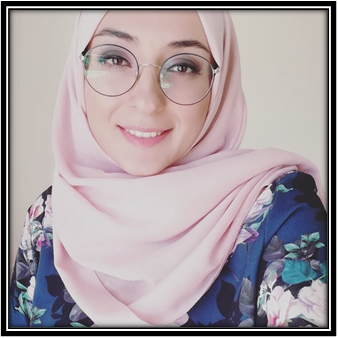
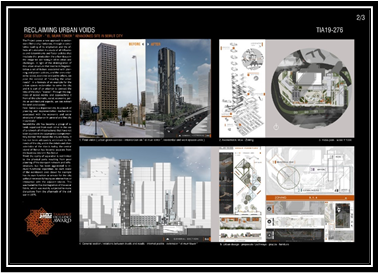
The project of the Lebanese University student Maysaa Zeaiter, graduate of the Faculty of Fine Arts & Architecture (Architecture - 2019) reached the semi-finals of the Tamayouz International Graduation Projects Awards 2019.
Maysaa was selected among the top 50 in the first phase and the top 20 in the second phase, pending the first five projects to be selected soon, out of the 900 graduation projects submitted to the festival committee from 155 universities in 64 countries.
Maysaa’s architectural project, completed under the supervision of Dr. Habib Sadek, proposes the rehabilitation of abandoned and neglected spaces in the city - the "Burj Al Murr area in Beirut" as a model.
The winning projects are arbitrated by an international panel of professors from several European universities specializing in architecture, design, infrastructure, urban design and urban planning.
The Lebanese University participates in the drafting of the "Beirut Urban Declaration" for the reconstruction of the areas affected by the port explosion ... and contributes to the launch of the Urban Observatory works
Dean, Professor Muhammad Al-Hajj, and a large number of his professors, participated in the drafting of the "Beirut Urban Declaration" for the reconstruction of the affected areas as a result of the port explosion, which was launched by the chief of the Lebanese Union of Engineers, Captain Architect Jad Tabet in the Union of Engineers - Beirut on October 9 The first of 2020, by invitation and organization of the Committee of Faculties of Architecture of the Union and the Associations of Architects and Engineers Specialized in Urbanism and in collaboration with the Chadirji Foundation for Architecture and Society.
During the presentation ceremony presented by the president of the College of Architects, Dr. Atef Mushaimish, Tabet spoke about the importance of the announcement in this circumstance with its content and the level of its preparers from the Union of Engineers and Faculties of Architecture.
Subsequently, the decision of the Committee of Faculties of Architecture of the Union of Engineers of Beirut and the president of the Chadirji Foundation for Architecture and Society, Dr. Habib Sadiq, read the articles of the document, to open the discussion in the presence of the General of Hajj Brigade and under the direction of the head of the Association of Specialized Engineers in Urbanism, Architect Firas de Mortada of the United Arab Emirates, with the participation of the United Arab Emirates. United via the ZOOM app.
A group of professors and students from the Lebanese University – Faculty of Letters & Human Sciences (Department of Arts & Archeology) discovered new remains in Wadi Arbin in Aandqet, Akkar dating back to the Roman and Byzantine era. This discovery can re-establish a specific historical period in Akkar, which is the strategic area linking the Lebanese coast with Syria’s inland.
Under the agreement signed between the Lebanese University and the Directorate General of Antiquities (DGA) at the Ministry of Culture, the team started its work in Akkar in April 2018 under the supervision of the Head of the Department of Arts & Archeology at the Faculty (Branch 4), Dr. Joanna Shahoud. Last month, the team registered new discoveries in Wadi Arbin, consisting of two-storey ancient houses. The ground floor was used for storage and olive presses while the second floor was used for accommodation, in addition to the remains of three churches and tombs carved in the rock, pottery of ancient glass and some coins.
The project, undertaken by the Lebanese University, will continue for three years, with the final phase of the project including the restoration and rehabilitation of the archaeological sites discovered.
The Museum of Natural Sciences at the Lebanese University exists since 1979 and is a scientific wing that serves as a research tool for students and researchers, and a cultural portal for the stakeholders.
The museum includes a collection of samples of insects, reptiles and fossils, which the war that Lebanon had gone through had destroyed some of its contents and the remains were transferred to the Faculty of Sciences in Fanar in 1984. Before its official opening in May 2004, the museum was an insectology laboratory and part of a research project funded by the British Embassy in Beirut, as stated by Dr. Najla Zaidan, one of the Museum founders.
Dr. Zaidan said the museum's assets managed by the Department of Life Sciences and Earth at the Faculty of Sciences, include fossils and all that is related to Earth science from insects, reptiles, amphibians and stone tools used by humans two million years ago and the oldest in the Middle East. She also noted to the importance of documentary annotations alongside the exhibits (lists of names, sources and dates).
The Lebanese University, in cooperation with the Ministry of Culture, aims to put the Museum of Natural Sciences - Fanar and George Tohme's herbarium - on the list of national museums, to be the main contributor to the dissemination of environmental and scientific culture about Lebanon.
The laboratory of archeology at the Faculty of Letters and Human Sciences (Branch 2), Fanar was inaugurated in 1986 as an independent three-storey building equipped and dedicated to archaeological research. Subsequently, it was severely affected by the events of the civil war, which inflicted enormous damage during more than twenty years.
The purpose of the laboratory was to enable students to practice and develop their theoretical knowledge (description, classification, conservation, etc.) under the supervision of their professors. Thus, future generations of archeology researchers had to be forged in this academic setting. At that time, the activity was sporadic following the pace of the war in very difficult conditions, including the lack of funding. Nevertheless, the collections kept were enriched with various archaeological objects (coins, ceramics and flint) thanks to the generosity of some donors and researchers. By way of example, Professor Raymond Gèze and his students collected a rich amount of rock specimens in the Lebanese mountains. The tenacity of faithful enthusiasts, students, professors and researchers has made it possible, against all odds, to maintain the laboratory to date.
